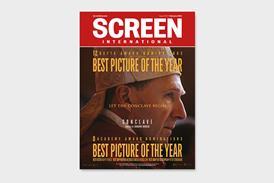The term 'business model' has been haunting the film industry all year. It has been a given in any conference presentation and a must at market and festival discussions.
The reason for this ubiquity is easy to understand. However great the raw data appears for this year's box office or however extraordinary the sums generated from private equity in Hollywood, there is an inescapable feeling the film business is changing.
That is not to write off recent progress as fool's gold.
Two years ago, plenty of commentators were happy to dismiss the future of the theatrical business after a severe slump in many markets. Now the box office is set into a pattern that looks sustainable.
Equally the private equity bonanza that has brought in billions to studio production cannot be dismissed as a flash in the pan.
The discussion about new business models is founded, however, on two assumptions: the economics of the industry are under severe strain and the industry has not yet found a convincing financial basis for a switch to the new digital opportunities.
The first assumption is becoming ever clearer: the US writers' strike emphasises a lack of consensus on what constitutes a fair share of the spoils of film revenues.
If the arguments have been focused ostensibly on DVD, it is the vast amount of private equity money pouring into the US and the promise of lower-cost digital means to reach audiences that are the elephants in the room.
What has also been seen this year is a drop in DVD revenues coupled with a rise in the cost of talent and global marketing, which some analysts believe is making the blockbuster business unprofitable, despite the huge box-office takings.
The optimists' big hope for film is that it can expand into new digital frontiers with far more efficient ways of distribution to theatres, homes and mobile devices.
Again it is the business model that is proving to be a significant brake. Digital cinema this year appears to have moved to a general acceptance of a single standard for roll-out.
In the US in particular, substantial progress has been made in installing new equipment.
But in Europe and most of Asia, there has been an impasse with exhibitors and distributors struggling to agree a model for a fair sharing of costs. The virtual print fee-based model proposed by Arts Alliance Media in Europe may be the only game in town right now.
For new forms of distribution, this has been a year of much more heat than light. US studio download-to-own deals in 2006 did not open the floodgates in 2007. Video on demand has plenty of players declaring an interest but few are playing yet.
Not knowing exactly how money can be made has left a dangerous vacuum. Potential film deals have been left on the table at many markets this year because no-one knows what the digital rights might be worth. Indeed there is only one working model making progress throughout the world - piracy.
That may be the spur to turn this year's business-models talk into next year's action.






















No comments yet